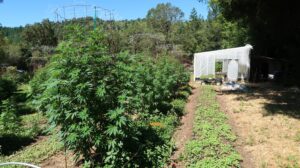Effort launched to streamline process for requesting stream flow diversions

SCCWRP and its partners have begun working to streamline the process by which Californians requesting to divert stream flows can assess whether the flow reductions will adversely affect the streams’ ecological health – the third phase of an effort to standardize how California evaluates flow diversion requests.
The study’s third phase, launched in June, is intended to reduce the need for flow-diversion applicants to generate watershed-specific curves that show the relationship between flows and ecological response; instead, applicants will be able to use pre-developed regional curves in their analyses. The approach is consistent with the California Environmental Flows Framework (CEFF), a scientific approach co-developed by SCCWRP to bring consistency and standardization to how flow targets get set statewide.
The study was originally motivated by a statewide effort to standardize the process by which California cannabis growers can demonstrate that the water they’re requesting to divert from nearby streams to support cannabis cultivation does not adversely affect the streams’ ecological health; however, the underlying approach developed via this study will be applicable to other types of flow diversion requests across California.
While this approach is being piloted initially in the North Coast region of California, it is designed to be readily adapted for use in each of the 14 regions statewide.
More news related to: Ecohydrology, Uncategorized